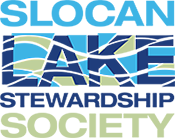The Bonanza Biodiversity Corridor (BBC), situated at the north end of the Slocan Watershed, the BBC watershed is a healthy, natural resource area that is largely defined by undeveloped lands, mature forests, a multitude of streams, wetlands, species and habitats. The BBC has been officially recognized as a focal area for conservation, a biodiversity hotspot and a key wildlife connectivity corridor by Environment and Climate Change Canada through the Kootenay Conservation Program under the Kootenay Connect project.
At the heart of the BBC, Bonanza Creek meanders through the valley bottom, supporting rainbow trout and kokanee spawning before flowing into the Slocan Lake. The series of wetlands in the valley bottom are a major contributor of nutrients and a vital source of cold water into the Upper Columbia Basin system. On-the-ground wetland restorations have been completed for three wetlands sections in the corridor – Hunter, Upper Bonanza and Summit Marshes. SLSS is dedicated to continue site monitoring and use these reference sites as to the ongoing health of the BBC wetlands. In the final year, a BBC Conservation Plan was delivered that outlines next steps in the ongoing protection of the BBC’s water, forest, species and habitats.
Detailed reports, maps and yearly project videos are provided through the Kootenay Conservation Program website:
Project Overview
Beavers
Species-At-Risk & Conservation Values
Wetland Enhancements
Climate Adaptation


